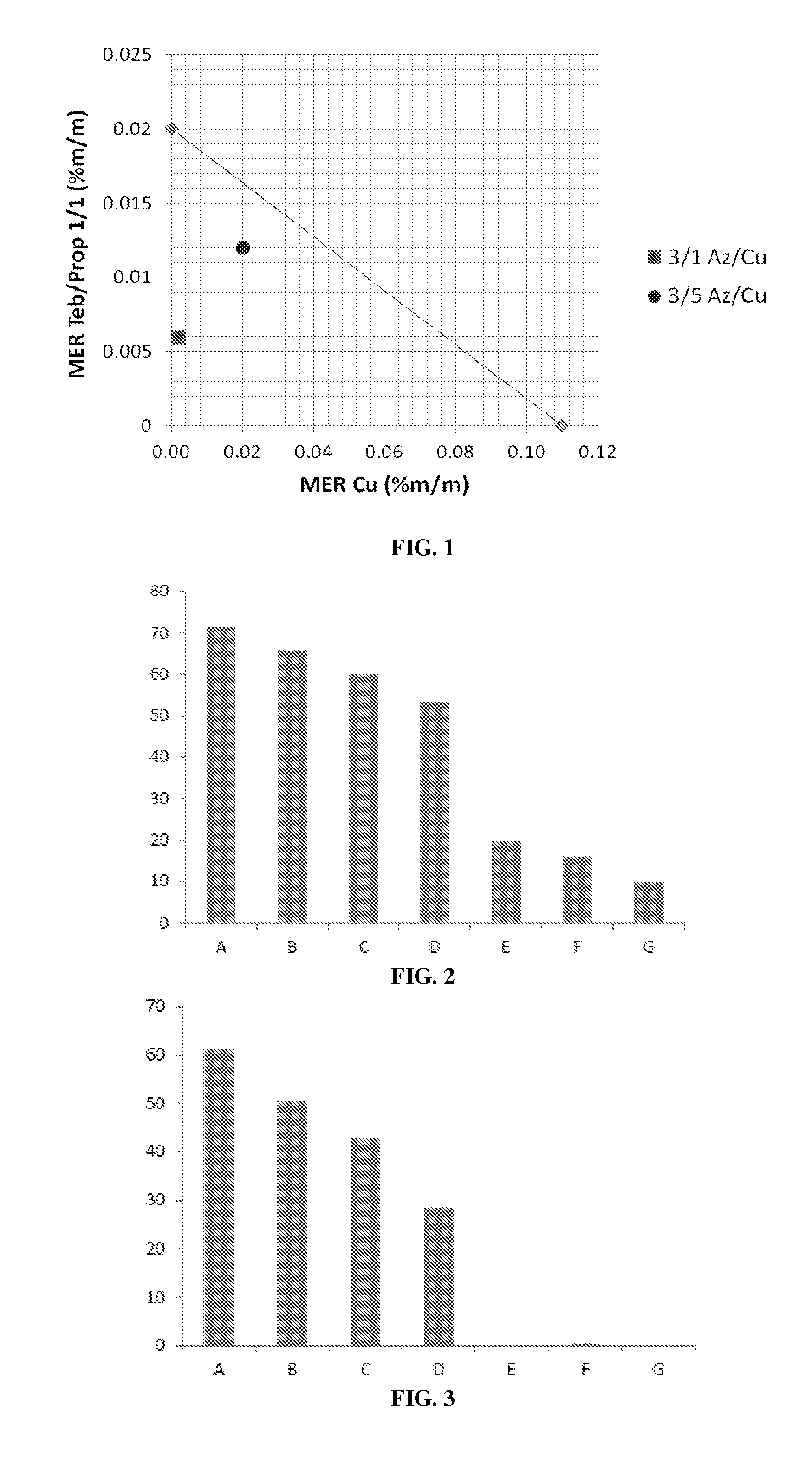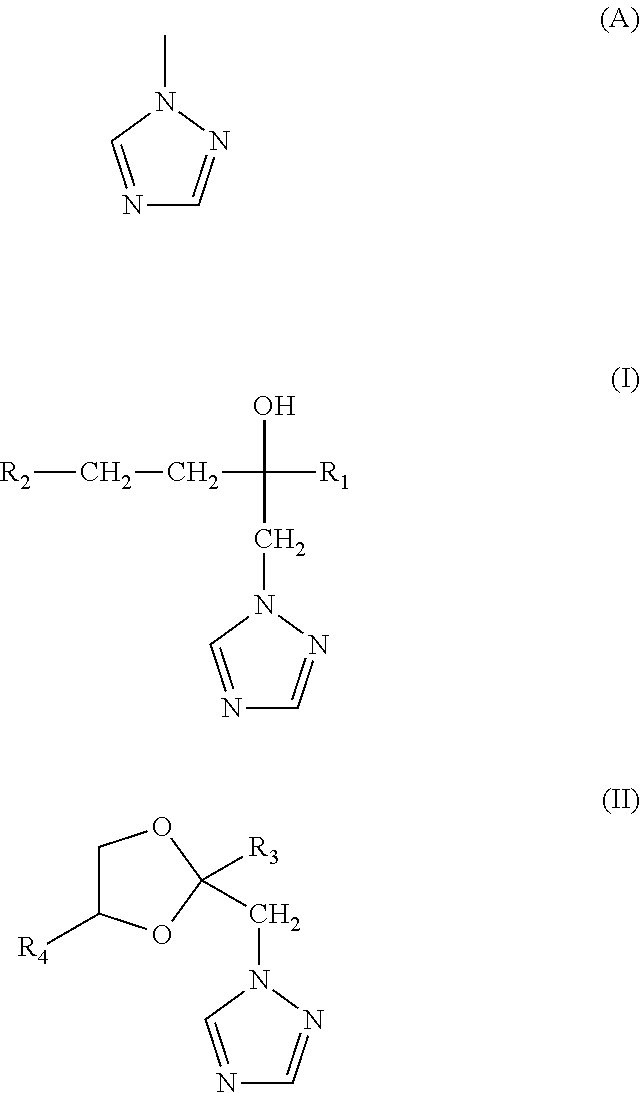Wood preservative
a preservative and wood technology, applied in the direction of liquid/solution decomposition chemical coating, solid/suspension decomposition chemical coating, superimposed coating process, etc., can solve the problems of timber being exposed to the weather, prone to degradation by elements, and not fully protected by timber
- Summary
- Abstract
- Description
- Claims
- Application Information
AI Technical Summary
Benefits of technology
Problems solved by technology
Method used
Image
Examples
example 2
[0101]A ready to use solution; metal to azole ratio 1:3
Component% w / vTebuconazole0.45Propiconazole0.45Permethrin0.32Copper (as copper0.30naphthenate)Co-solvent0.75Wax1.00Resin1.00White spiritBalance
example 3
[0102]A ready to use solution; metal to azole ratio 1:2.6
Component% w / vTebuconazole0.45Propiconazole0.45Permethrin0.32Copper (as copper0.35naphthenate)Co-solvent0.75Wax1.00Resin1.00White spiritBalance
[0103]It will be appreciated that the illustrated ready-to-use solvent-based formulations used in the treatment of wood achieves the required penetration of the wood with actives that are stable in these formulations. It will be further appreciated that the inventive formulation substantially overcomes or ameliorates many of the disadvantages inherent in the art.
example 4
[0104]The synergy between the azoles tebuconazole / propiconazole and copper, is demonstrated by way of the results of field trials in Hawaii, where the decay hazard is known to be very severe. Radiata pine sapwood panels (200×70×25 mm) were treated with various preservatives and exposed on racks at 45°, using a method generally described as the “flat panel test” (Reference: Australasian Wood Preservation Committee, Protocols for Assessment of Wood Preservatives, March 2007 Revision, pp. 32). Untreated controls, solvent-treated controls and panels treated with reference preservatives (e.g., CCA) were also included in this field test. The treatments of interest are summarised in Table 2, below.
TABLE 2Results of Hawaiian Field TrialsCu / AzoleActive(s)Retention (% m / m)ratioCommentCopper naphthenate0.11n / aHeavily decayed(CuN)Tebuconazole / 0.04, 0.02 (totaln / aLowest retentionpropiconazoleazole)rated 7(1:1)Tebuconazole / 0.03 / 0.01 (total1:3Lowest retentionpropiconazoleazole / Cu)rated 7(1:1), CuN...
PUM
| Property | Measurement | Unit |
|---|---|---|
| soluble | aaaaa | aaaaa |
| pressure | aaaaa | aaaaa |
| durability | aaaaa | aaaaa |
Abstract
Description
Claims
Application Information
 Login to View More
Login to View More - R&D
- Intellectual Property
- Life Sciences
- Materials
- Tech Scout
- Unparalleled Data Quality
- Higher Quality Content
- 60% Fewer Hallucinations
Browse by: Latest US Patents, China's latest patents, Technical Efficacy Thesaurus, Application Domain, Technology Topic, Popular Technical Reports.
© 2025 PatSnap. All rights reserved.Legal|Privacy policy|Modern Slavery Act Transparency Statement|Sitemap|About US| Contact US: help@patsnap.com



